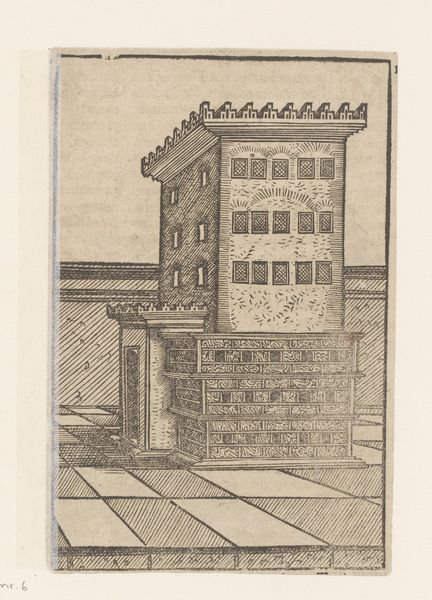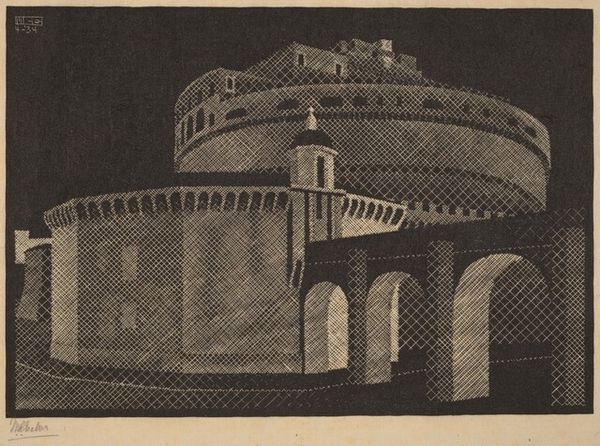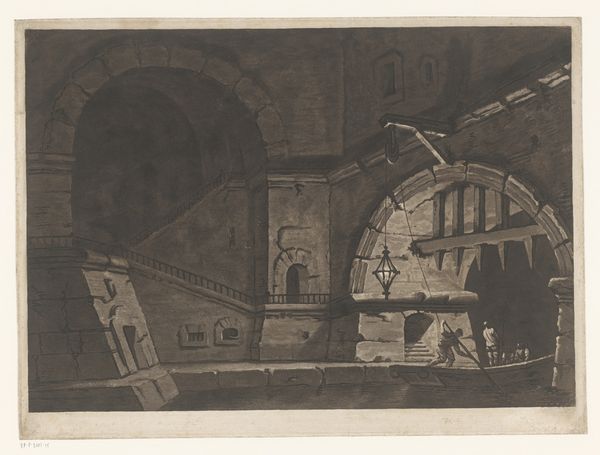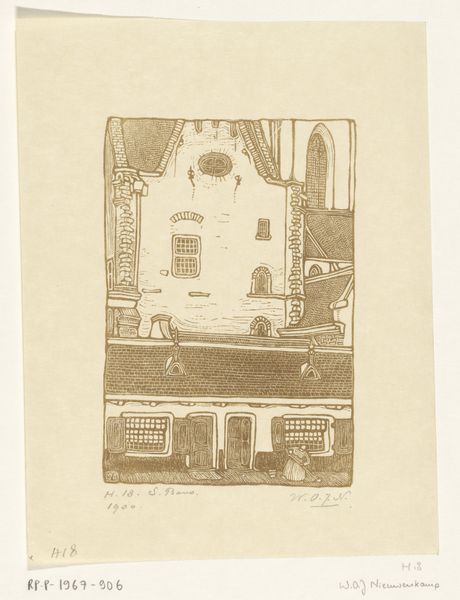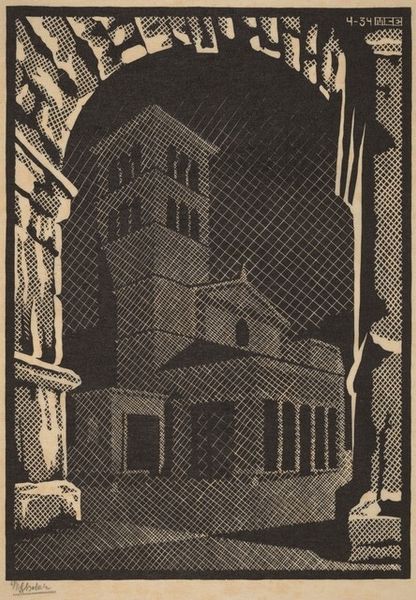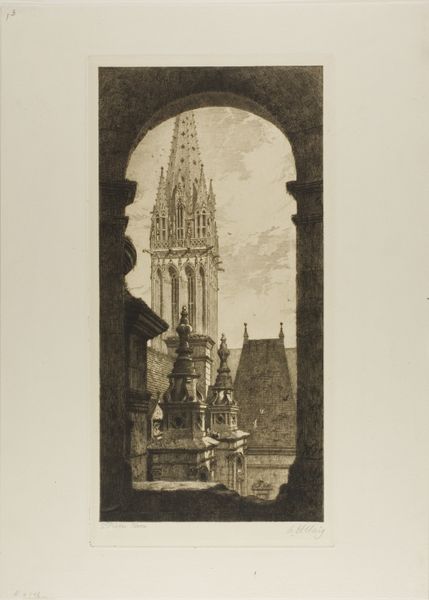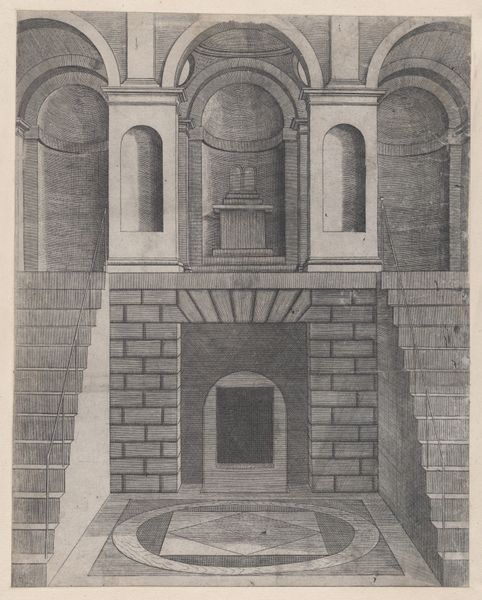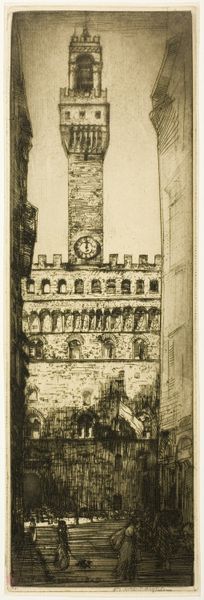
print, linocut, etching, woodblock-print
# print
#
linocut
#
etching
#
etching
#
form
#
linocut print
#
woodblock-print
#
geometric
#
line
#
cityscape
#
modernism
Copyright: National Gallery of Art: CC0 1.0
This is M.C. Escher's "Santa Francesca Romana," made with a woodcut. Look how the marks, lines, are all parallel. The negative space is just as important, or maybe even more, than the architecture itself. With woodcuts, there's no hiding. You can really see the hand of the artist. Each line, each shadow, is deliberately carved away, demanding a very methodical process. Escher isn't just depicting a building; he's thinking about light, shadow, and the stark contrast between them. The black and white here isn't just about color; it's about extremes, the tension between presence and absence. See how the horizontal lines that make up the sky almost vibrate? It reminds me a little of some of the German Expressionist woodcuts, like Kirchner, but Escher's got this mathematical precision to him. He's not just feeling the emotion of the scene, he's calculating it. This piece isn't just a picture; it's an idea, a puzzle, an exploration of how we see.
Comments
No comments
Be the first to comment and join the conversation on the ultimate creative platform.

